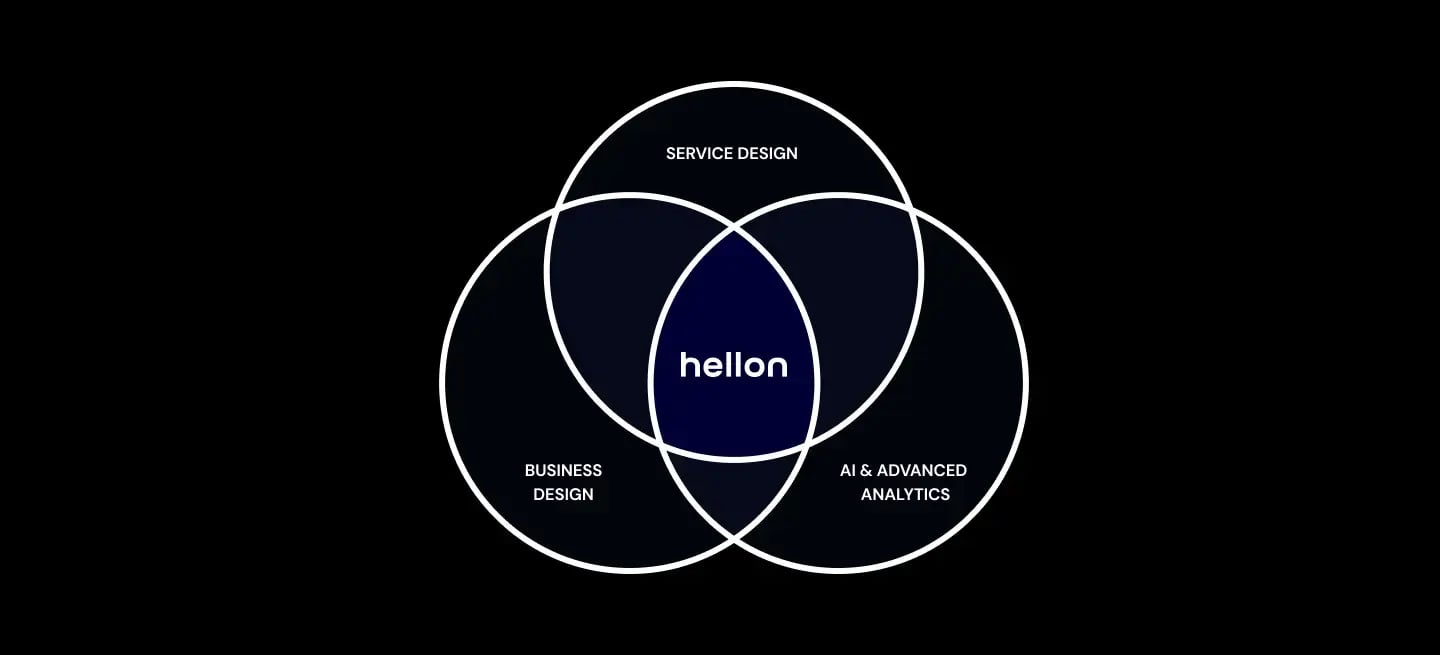Five Tangible Business Benefits of Service Design

As service designers, we are often asked how service design and its success rate are measured. Those considering investing in service design are also naturally interested in the tangible benefits of service design for the business and what return on investment they can expect. We tackle these questions in this blog post so keep on reading!
How do you Measure the Success of Service Design?
When done well, service design has several positive and long-term impacts on business operations. At its best, it improves your customer experience and the success of new products and services both now and in the future.
The key to measuring the success of service design is to focus on measuring the right factors, or the metrics essential to the project in question and the company's business objectives. It is never sensible, not to mention possible, to measure absolutely everything simply for the sake of measuring. Therefore, it takes an expert to select the most important and relevant metrics that will bring the project closer to the goals that improve the business.
What are the key metrics used to measure service design?
CES (Customer Effort Score) indicates the level of effort consumers put into buying services, CTS (Cost to Serve) the costs associated with serving the customer, CSAT (Customer Satisfaction) how happy customers are with the service, CLV (Customer Life Value) the value of the customer relationship and TtM (Time to Market) the time it takes to develop and launch a product and so forth – the list of metrics that can be used to assess service design and customer experience is endless.
All the metrics mentioned above are good options, but since no two companies are the same, there is no one size fits all solution. The key is to choose the metrics that best meet the requirements of the business and service design project. An excellent service design partner supports you in ensuring that the results measured contribute to a clear business impact.
It is also important to keep in mind that measuring alone won’t produce business value. Take for example the NPS, CSAT and CES metrics, which are often collected using an electronic device following a service experience. Surveys like these seldom reach enough customers to be considered a viable tool for obtaining a comprehensive overview of the current situation.
Vodafone improved their customer service experience with the right metrics
Even though measuring is just a drop in the ocean of service design, the results obtained through measuring can be used to enable justified and business-boosting initiatives.
A great example of this is the partnership between Hellon and the global telecommunications giant Vodafone. For a project, Vodafone wanted to establish a metric for measuring the return on investment of service design, i.e. the measurable impact of designing a service innovation on the business. The metric of choice for this project was CTS (Cost to Serve), which was used to uncover the cost for Vodafone to produce a service examined during the project. In the end, Cost to Serve was the financial metric of choice among many other metrics and was also used in the project to examine focus areas that could be influenced by service design.
Five tangible benefits that make service design a worthy investment
1. Service design ensures the success of new products and services. It is quite common for a company to develop and launch a new product or service after only testing it internally. Following the launch, however, it is concluded that the product or service fails to gain traction because the customers, or intended end users, were never taken into consideration in the development process. In other words, the product or service does not meet a genuine need and the demand for it remains low.
This is where the service design approach, with its collaborative customer research and prototyping focus, comes in handy, as it helps build understanding of what customers need and expect from the product or service. Service design uncovers the criteria customers have for committing to a company and its products. This in turn ensures the relevance of the product and that it will stand the test of time and competition.
2. Service design keeps your company relevant and innovative. What your customers now consider a useful, functional and excellent service may not be any of these things in the near future. The market is changing at an unprecedented pace and at the same time, there is a need for predicting the trends in product and service development. With service design, you can ensure the continuity of change, which helps your company meet both the current and future needs of your customers. In addition to solutions for the near future, so-called “quick wins”, service design can also be used to create new innovations, which require bolder moves and a bolder outlook on the future. Service design supports your company in staying ahead of the competition and keeps you relevant in the minds of customers.
3. Service design boosts customer loyalty. It is no secret that organisations prefer loyal customer relationships over one-off transactions because the former is a more desirable and sustainable business model. Additionally, we live in a time where the importance of lasting memories and customer experience often exceeds the price tag.
Service design offers in-depth insight into customers’ needs and motivations, which make them want to use specific types of services. This enables companies to develop emotionally attractive services which improve customer loyalty. When customers feel that a service provides them with added value, price is no longer the sole deciding factor. The purpose of service design is to ensure that the measures to achieve this added value are optimised for the customer and viable for the provider.
4. Service design breaks down silos. In past decades business improvement was often considered to mean increasing effectiveness and adopting more efficient business practices. This way of working has caused silos to develop in many organisations, leading to various departments having their separate responsibilities and goals. By adopting service design principles, companies not only become more customer-centric, they also become aware of why it's so important to consider business practices from the customers’ point of view. The most important message to take home from this is the fact that the customer always sees the company as a single entity. As such, a siloed and multifaceted organisation does not generally support the customer's perspective and needs.
Service design helps the company's internal stakeholders analyse the customer experience in a more comprehensive manner instead of as a series of scattered factors. This breaks silos and brings scattered departments together, paving the way for a more customer-centric model.
5. Service design triggers organisational change towards customer-centricity. Even the smallest bit of success achieved using service design can be the catalyst for customer-centric principles to spread across entire organisations. We have witnessed several situations in which the collaborative nature of a customer-centric model has provided fertile ground for the development of new ideas. The Hellon way of working is to involve a large group of people from the client organisation in the project instead of just the key stakeholders or the project team. By involving a variety of stakeholders, the principles of customer-centric development spread to every part of the organisation through the people who have been engaging with the project. Our emphasis on learning by doing is also often seen as very inspiring, especially for senior management. When directors and managers are given the chance to talk with the customers and receive direct feedback on what they think about the company's services, there is an opportunity to gain leverage and build increased understanding of what to do in the future.
Business design and artificial intelligence as Hellon's strengths
Steering a company towards adopting a more customer-centric model is a proactive process, the success of which can determine the future, or even the existence, of a company. Organisations must have the ability to develop the right metrics for measuring their customer experience in order to know where to invest at any given time.
Hellon’s strength lies in offering high-quality service design solutions that combine business understanding and expert use of data and analytics. Our projects are a combination of creative service design and data-driven measures, which also sets us apart from traditional service design agencies. What’s more, our artificial intelligence solution AINO uses data to help companies identify a project’s key areas for potential and impact.

In addition to service design, Hellon's strengths combine expertise in business design, artificial intelligence, technology and data services.
We strongly believe that in the future, service design and excellent customer experience will go hand in hand with our customers’ data. With over 10 years of experience and hundreds of successful service design projects under our belt, we know what excellent customer experience and success look like.
Get in touch to find out more about how your company can boost its business through excellent customer experience, developed using service design principles.